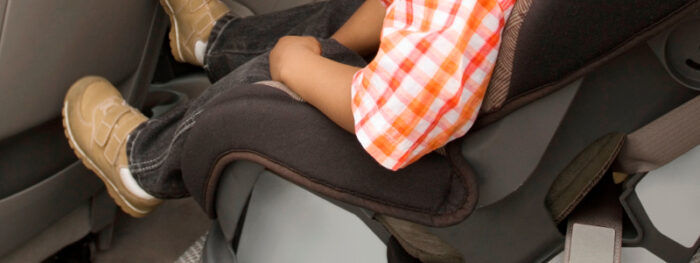Car seat safety guidelines are in place to help you keep your young passengers safe while they travel. You might have had your car seat professionally installed in your own car, but in a hire vehicle, you might need to put one in yourself.
Following these simple steps can help you get the car seat installed in your hire vehicle quickly and safely.
Who needs a car seat?
Children usually need a car seat until they’re around 12 years old, or they grow to over 135cm. Once they’ve surpassed the minimum height, they’ll still need to wear a seatbelt while they travel although they’ll no longer need their car seat.
As the driver, it’s your legal responsibility to make sure that any child under the age of 14 in your vehicle is wearing their seatbelt. You can be fined if you, or any children under the age of 14 aren’t wearing their seatbelt or in an appropriate car seat while you drive.

Types of car seat
There are lots of different kinds of car seat that you can choose. Which you go for will depend on the height and weight of your child. Height based car seats are known as i-size seats, and weight based models come in incremental sizes: 0kg, 9kg, 13kg, 15kg, 18kg, and 36kg.
Babies under 15 months must use a rear-facing car seat. These should never be fitted in the front seat if there is an airbag active on the passenger seat in the vehicle. Once they pass 15 months, it is safe to switch to a front facing seat.
High back booster seats offer the best protect to children if an accident should occur. The more fitted seatbelt system in a car seat fits their bodies better and offers more protection than a standard car seatbelt. But, for children who weigh more than 22kg and are taller than 125cm can use a backless booster seat when travelling.
Fitting a child car seat
Car seat safety guidelines assert that you must fit them with an ISOFIX mounting or a diagonal seatbelt strap.
All modern, i-size car seats come with ISOFIX fitting points. These allow you to attach the car seat to your vehicle without having to rely on its existing seatbelts to secure the seat. They’re so effective that new cars are typically fitted with ISOFIX fitting points to make travel with young children much easier.

If you’ve not got an i-seat model, attach the car seat using the vehicle’s seat belt. Simply run the seat belt through the belt path on your car seat and lock into place. It should be clearly signposted on the seat, and the belt should slide easily through, with no twists or snags.
If you’re using a front facing car seat, make sure you also use a top tether for additional security. This is a little hook on the back of the seat that can be used to prevent the car seat from tipping forward in a crash or sudden stop. Your car should have an anchor for the tether on the back of the seat. If you can’t find it, refer to the manual.
Always refer to the manufacturer’s guide when installing your child’s car seat. They’re the experts in their seat, and will be able to offer detailed advice for fitting to maximise your child’s safety.
Test your fit
Before setting off, test that your car seat is fitted correctly. A properly installed car seat won’t move more than an inch when you pull it about. If it’s moving more than it should, you’ll need to tighten your fastenings to keep it nice and snug.
Car seat safety guidelines are in place to help you keep your young ones safe when they’re in the care. Following them will help you protect your young ones as they travel.
Planning a family trip? Get away in one of our fantastic hire cars.
